15+ Mothers-in-Law Who Can Turn an Ordinary Day Into a Comedy Show

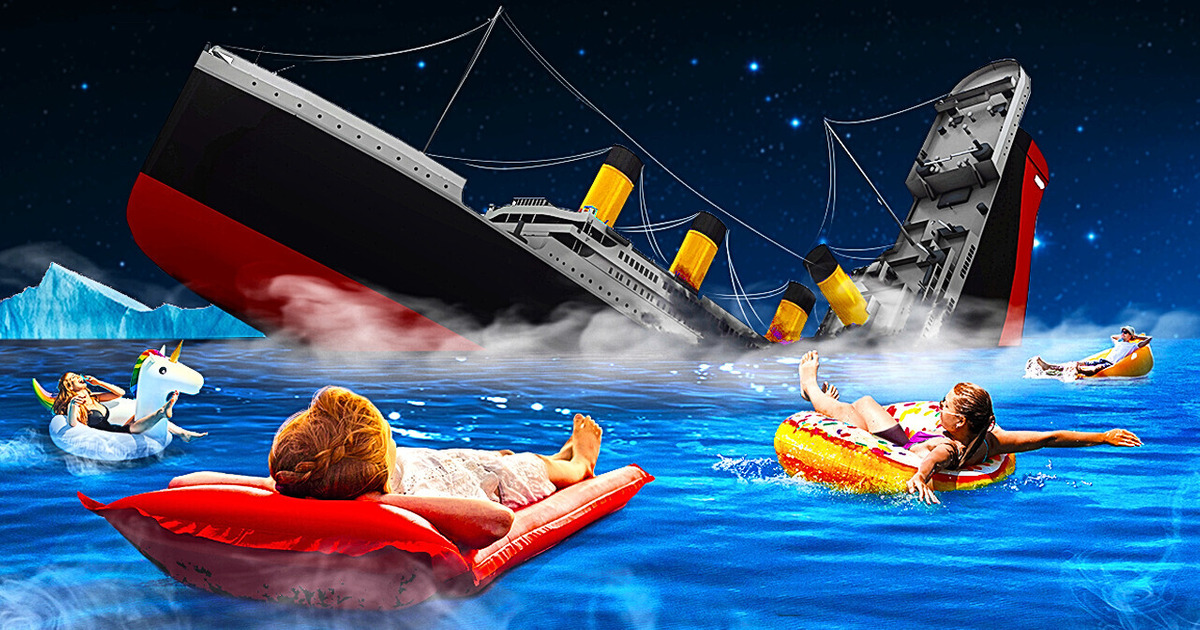
Staying in the water that’s 70ºF for a long time definitely won’t do your health any good. A water temperature of 50ºF is a nightmare. It feels much colder than the air of the same temperature.
The passengers of the Titanic were in 28ºF water. Can you imagine how cold it was? Even the iceberg that the Titanic met was warmer. The water didn’t freeze because of the high salt content.
But what if the temperature had been higher? What if the Titanic had sunk in warm water, say 120ºF? Theoretically, this could have happened had the waters of the North Atlantic met a warm undercurrent from the southern part of the ocean on disaster day. But this heat wouldn’t have been enough.
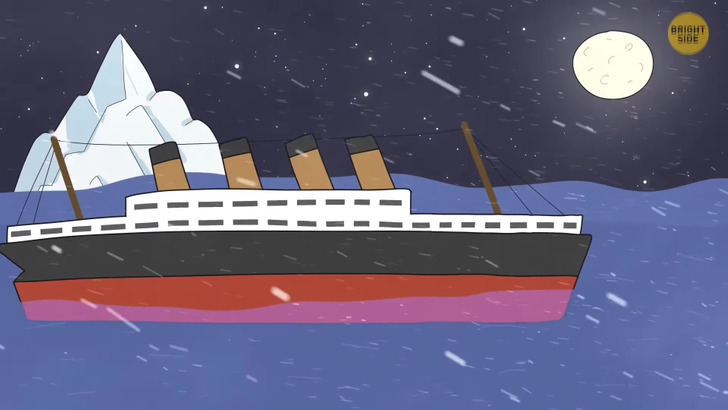
The ocean area is too vast, and the temperature is too low at night. The warm undercurrent alone wouldn’t have made a difference for people who were overboard. But if the Titanic had sunk in another place at one particular moment, perhaps then all people could have been saved thanks to an incredible natural phenomenon. Now onboard, everybody.
Our voyage to a parallel universe begins. It’s a moonless night on April 14-15. The Titanic crashes into an iceberg. Icy water floods the lower decks. The captain sends a distress signal. The nearest rescue ship Carpathia is 58 miles away from the sinking Titanic. At maximum speed, Carpathia will get there in 4 hours. That’s quite long, even in warm tropical waters, since your body loses heat anyway. The Titanic begins to sink. The crew downs lifeboats. Some of the passengers jump overboard.
The ship is going under the water. There are no boats left, so you jump along with other passengers. It feels as if you got inside a huge iceberg. The water is so cold that it’s hard for you to move. You can’t even scream because there’s no air in your lungs. But at this moment, you feel a pleasant warmth coming from the depths. The heat rises above your knees and waist, then reaches your neck. Finally, you regain control of your muscles and can breathe deeply.
You notice that all the other passengers feel the same warmth. The water becomes a little hot. It makes you happy. But in a moment, horror replaces your delight. The ocean begins to foam. And not because of the high temperature, but because something is rising from the ocean floor. You hear a heavy low sound coming from the depths. It’s not a sinking Titanic, but something bigger. You can see a huge iceberg nearby. It’s melting, and a huge chunk is breaking off from it.
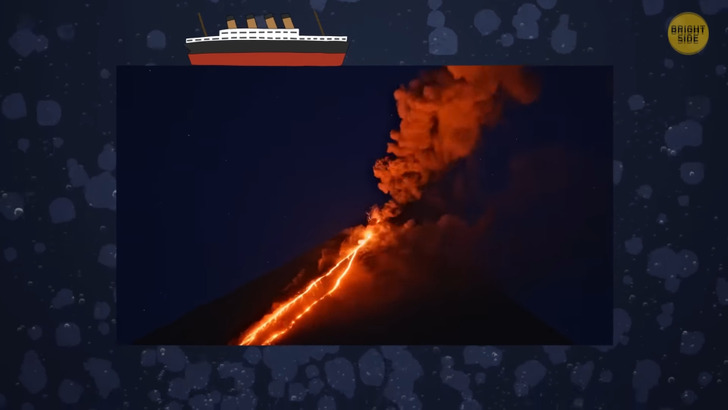
A million bubbles appear on the surface. Then you feel something hit you in the leg. Thousands of strange lightweight rocks are rising from below. There are also massive plates among them. People use them as lifeboats. You climb on one of those rocks and look at the ship. It doesn’t sink since all the water is bubbling and pushing the vessel up. You take one of the small rocks and understand everything. It’s pumice!
An underwater volcano has woken up right under the ship. Thousands of tons of volcanic rock are floating to the surface. When it erupts, its magma shakes the entire space, heats the water, and destroys the seabed. But it doesn’t result in anything destructive on the surface. The enormous pressure of hundreds of millions of gallons of water suppresses the volcano’s power. Molten rocks of the Earth’s crust are pressed against the seabed, and pumice rises to the surface. And here’s why it happens.
The upper part of Earth consists of many solid parts — tectonic plates. These plates collide with each other and divide. And when one part separates from another, the magma immediately comes up. So, all volcanoes are these unstable fault sites. If the Titanic had sailed over one of these areas during an eruption, many passengers would have been saved.
Back in the parallel universe, you notice the Titanic starts sinking again. The water is no longer bubbling. The volcano has gone out. In a matter of seconds, the ocean turns icy again. Fortunately, you have your pumice lifeboat. This is enough to wait for rescuers. But let’s imagine a situation with no underwater volcano and an iceberg. A situation when the water was warm from the very beginning...
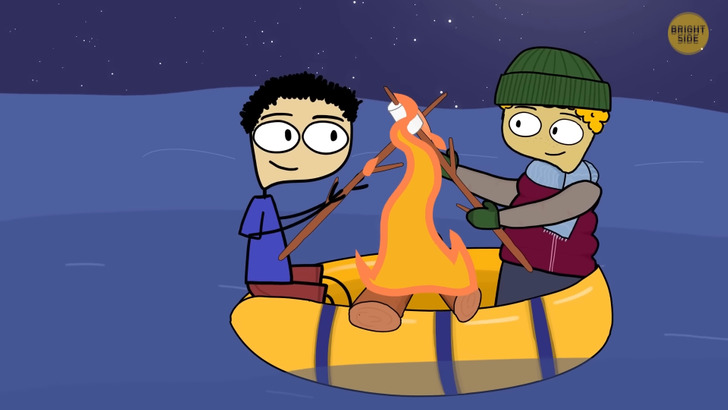
One of the engines in the motor compartment of the ship breaks down. Several pipes burst because of increased pressure, and now there’s a crack in the ship’s body. Water is filling the lower decks. The ship is sinking. People evacuate on lifeboats. There’s less panic since the night is warm, and no one is freezing. Each passenger gets a life jacket. The ship is breaking. You understand that you have to jump.
The Titanic goes underwater. Many passengers fall overboard in horror. They dive into the dark ocean and immediately come to the surface. Panic and complete chaos take over. The ship disappears in the dark, and finally, it’s all silent. A few minutes pass, and you notice there’s no panic at all. The water is warm. Almost all passengers have life jackets. Someone is floating on the wooden ship wreckage. After a couple of hours, the water no longer seems so comfortable. The ocean takes away your body heat. To keep warm, passengers swim closer to each other in a tight circle.
Yeah, now it’s quite possible to wait for another couple of hours till the rescuers come. People on lifeboats sail closer and take those who freeze on board. Passengers take turns: 20 minutes in the water, then 20 minutes in boats. It’s essential not to take your clothes off: even a wet outfit helps keep your body warm for longer. And when it seems that everyone is saved, somebody screams. A girl in a boat looks scared. She trembles with fear and points her finger into the black water.
Passengers try to see what’s there and notice a triangular fin. One, two, three... There are so many of them! The noise of the sinking ship has attracted a group of sharks. And now, they are circling the survivors, hoping to satisfy their hunger. They’re swimming slowly. It doesn’t look like they’re going to attack. But you should keep your eyes open, as these fish are some of the world’s most aggressive and dangerous sharks — the bull sharks.
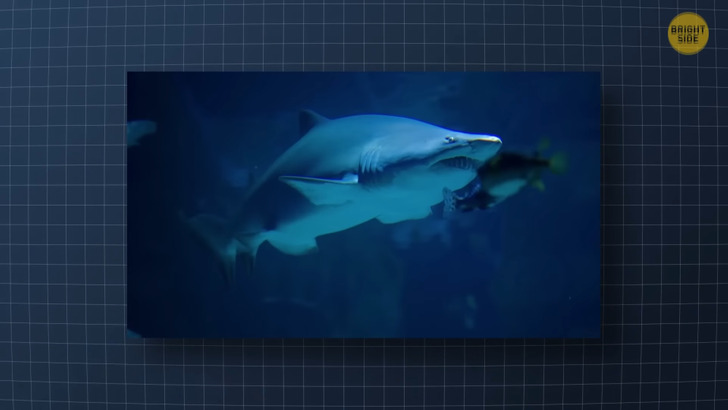
They can be agile, fast, and unpredictable. They don’t swim in the cold waters of the Atlantic, but the water in this parallel universe is perfect for them. The sharks are strong and sturdy. They create the illusion of slowness to relax their prey. They’re called bull sharks because of their short blunt muzzle, like that of a bull, and they like to hit a target or other sharks with their forehead.
Several fish are ramming boats. Someone falls into the water. Fortunately, people help them back on board. The sharks aren’t going to retreat. Chaos and panic ensue. People are screaming and splashing the water with paddles to scare away the fish, but it doesn’t help. One of the sharks opens its toothy mouth and clings to a boat.
At this moment, you notice more fins nearby. A pack of great white sharks arrives at the party. They are some of the most dangerous animals on the planet. They are big, fast, and strong, and their 300 triangular teeth lined in several rows are sharp as blades. Great white sharks swim around the boats and scare away the bull sharks. You fall off the boat and see a big fin approaching you. Fear awakens the survival instinct in you.
You’re trying your best to swim away from the shark as far as possible. Of course, it’s useless since the shark is much faster and will definitely catch you. You feel your foot touching the shark’s nose. The other foot gets into the toothy mouth. You scream in horror. After a second, the shark lets you go. Great white sharks rarely attack people. If they bite, it’s just to test you. After all, the shark’s favorite prey is seals. It simply loses interest if it realizes you aren’t a seal.
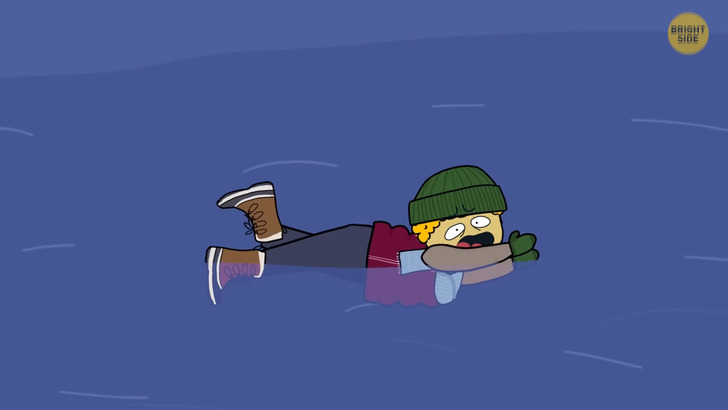
But if the shark is starving, it doesn’t matter to it what kind of prey you are. Lucky for you, this one is not like that. Those survivors in the boats have almost nothing to fear, either. Great white sharks don’t attack them. They can push boats slightly, but only to test them. The great white shark is swimming away from you.
But a bull one appears. And it looks like it’s hungry. The shark is swimming towards you, opens its mouth, and... a loud ship horn penetrates the water. This is RMS Carpathia that has come to the rescue.
All the sharks swim away scared. All passengers are saved. Back in our universe, another ship that had been nearby could have saved the passengers much earlier. But that’s another story.











